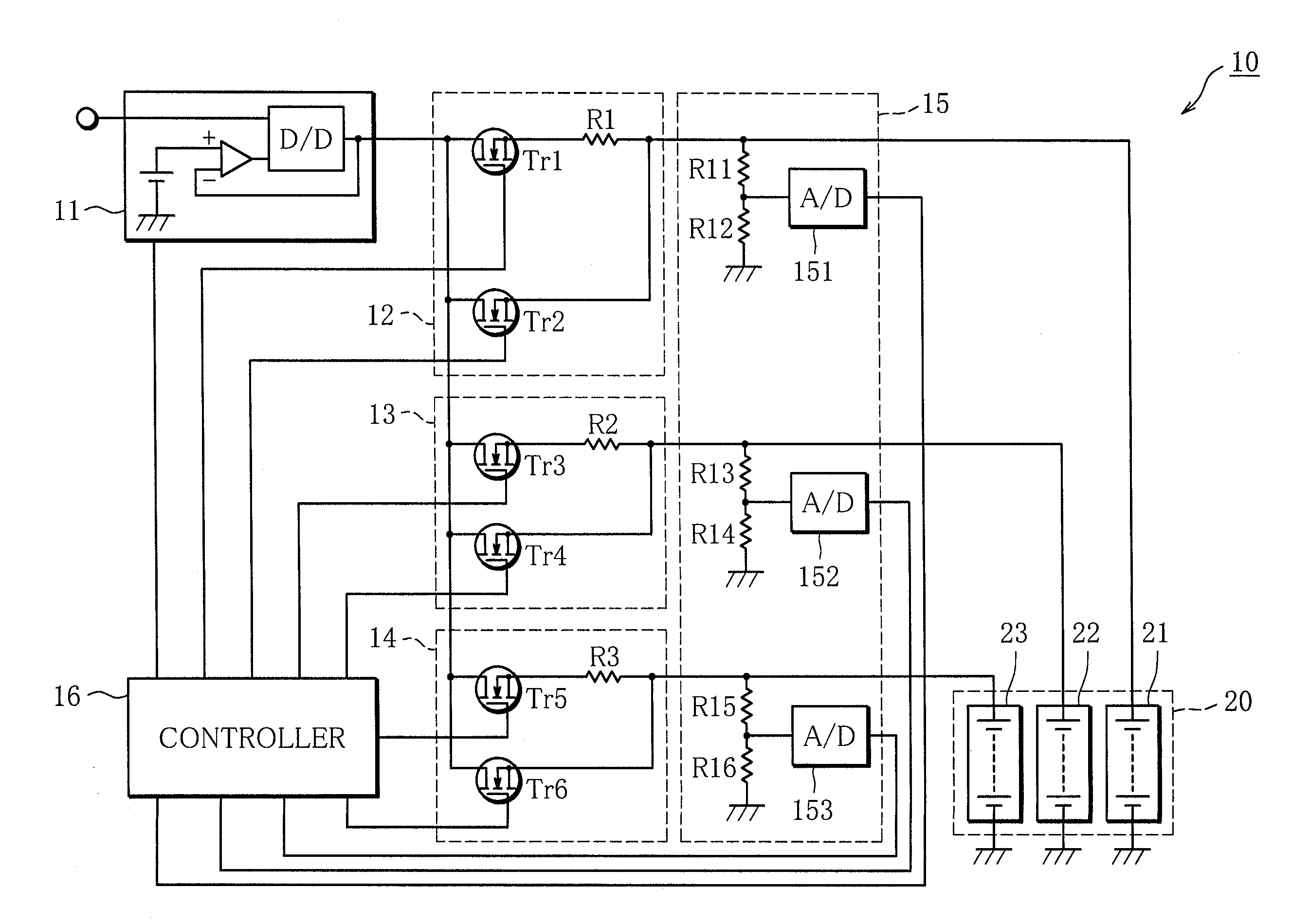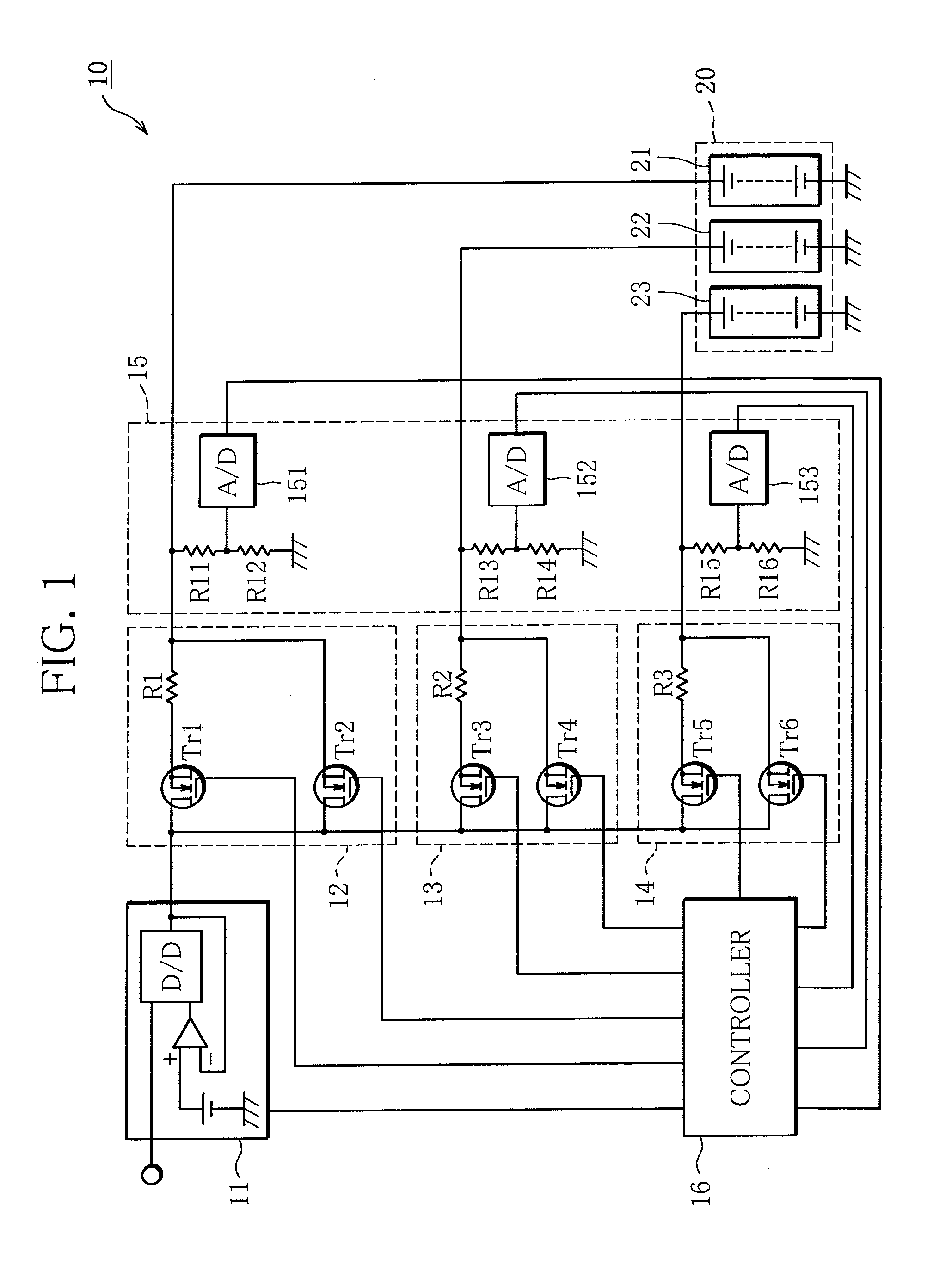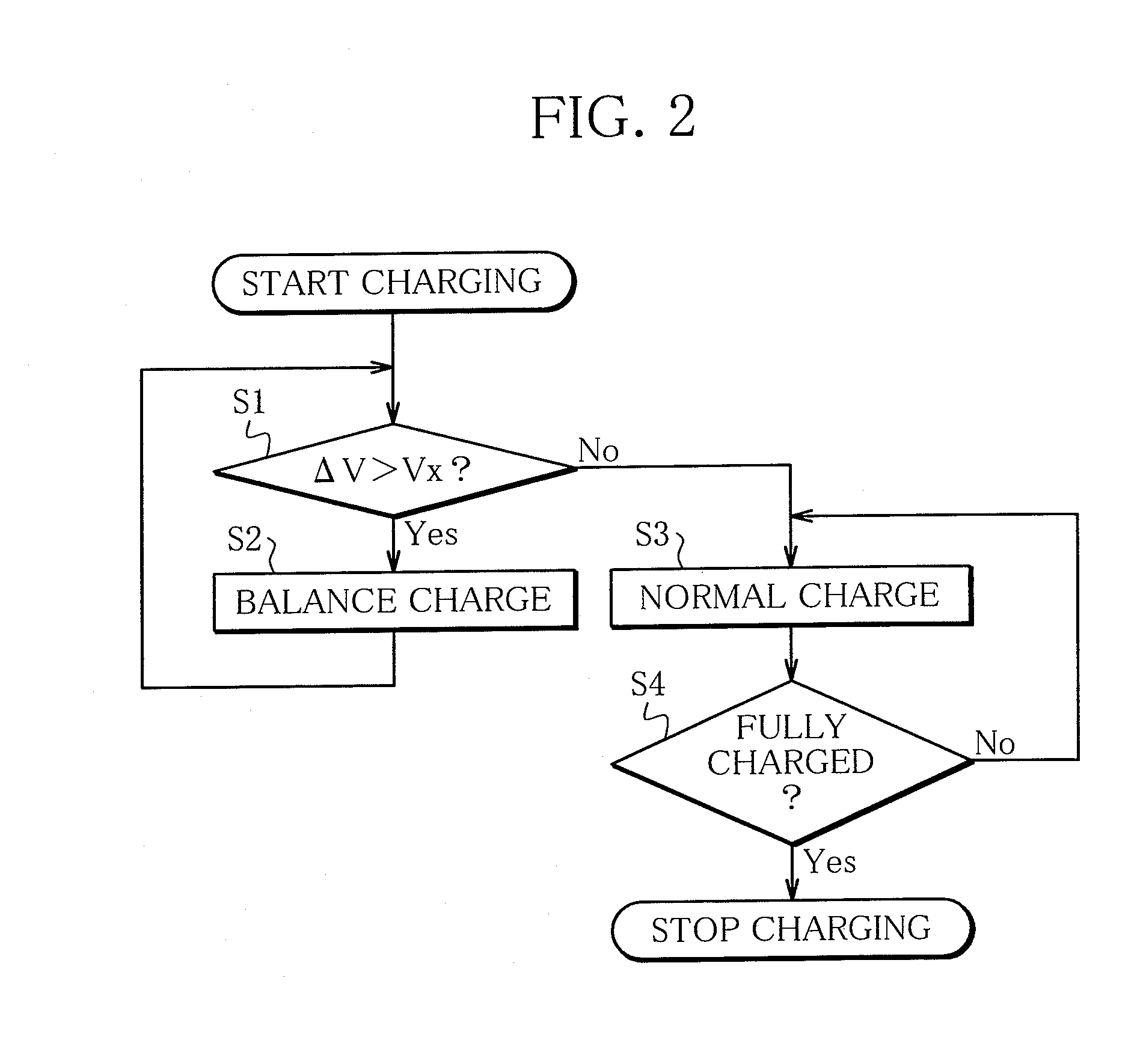Charger
a charger and charging current technology, applied in the field of chargers, can solve the problems of relatively low charging current and relatively low charging speed of relative high voltage, and achieve the effects of reducing costs, simple construction and low cos
- Summary
- Abstract
- Description
- Claims
- Application Information
AI Technical Summary
Benefits of technology
Problems solved by technology
Method used
Image
Examples
Embodiment Construction
[0018]An embodiment of the invention will be described below with reference to the attached drawings.
Configuration of Charger
[0019]The configuration of a charger 10 of the present invention will be described below with reference to FIG. 1.
[0020]FIG. 1 is a view showing a whole configuration of the charger 10.
[0021]The charger 10 has a power source device 11, a first charging circuit 12, a second charging circuit 13, a third charging circuit 14, a battery voltage detection circuit 15 and a controller 16. A multi-parallel battery pack 20 charged by the charger 10 includes three battery banks 21 to 23. The battery banks 21 to 23 are rechargeable batteries such as nickel-hydrogen secondary batteries. The number of battery banks of the multi-parallel battery pack 20 to be charged according to the invention is not particularly limited to three as long as the battery pack 20 includes two or more battery banks.
[0022]The power source device 11 serving as a “constant voltage and constant cur...
PUM
 Login to View More
Login to View More Abstract
Description
Claims
Application Information
 Login to View More
Login to View More - R&D
- Intellectual Property
- Life Sciences
- Materials
- Tech Scout
- Unparalleled Data Quality
- Higher Quality Content
- 60% Fewer Hallucinations
Browse by: Latest US Patents, China's latest patents, Technical Efficacy Thesaurus, Application Domain, Technology Topic, Popular Technical Reports.
© 2025 PatSnap. All rights reserved.Legal|Privacy policy|Modern Slavery Act Transparency Statement|Sitemap|About US| Contact US: help@patsnap.com



